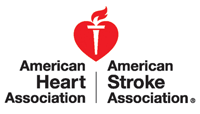 San Diego, CA – A cardiac monitor about the size of a USB flash drive that’s implanted under the skin was six to seven times more likely to detect atrial fibrillation, an abnormal heart rhythm that’s a risk factor for stroke, according to a science report presented at the American Stroke Association’s International Stroke Conference 2014.
San Diego, CA – A cardiac monitor about the size of a USB flash drive that’s implanted under the skin was six to seven times more likely to detect atrial fibrillation, an abnormal heart rhythm that’s a risk factor for stroke, according to a science report presented at the American Stroke Association’s International Stroke Conference 2014.
The monitor could help identify the 30 percent of ischemic strokes with no apparent cause. Ischemic strokes are caused by a clot in a blood vessel in or near the brain.
“Atrial fibrillation can be difficult to detect due to its sometimes intermittent nature, and the fact that it isn’t always accompanied by symptoms,” said Richard A. Bernstein, M.D., Ph.D., an author of the new study and professor of neurology at Northwestern University’s Feinberg School of Medicine in Chicago. “For a patient who has had an unexplained stroke, it’s really important to determine if they have AF, because left untreated, it could result in a second and even more devastating stroke.”Most people who have a stroke caused by a blood clot are given aspirin or similar drugs, such as clopidogrel, to prevent another stroke, said Bernstein, who is also director of the Stroke Program at Northwestern Memorial Hospital.
But in patients with atrial fibrillation, anticoagulants, such as warfarin, or the newer anticoagulants, have been found much more effective at preventing stroke. Anticoagulants aren’t routinely given in the absence of atrial fibrillation because they can be riskier and more inconvenient for patients.
“Finding AF after a stroke changes therapy from the aspirin class of drugs, which are not very effective in AF, to anticoagulants,” he said. Among patients in the study found to have AF, oral anticoagulants were prescribed for 97 percent of cases, the researchers reported.
The new study, called CRYSTAL-AF (CRYptogenic STroke And UnderLying Atrial Fibrillation), included 441 patients who had an unexplained stroke. All had at least 24 hours of standard cardiac monitoring within 90 days of the stroke, and half were tracked with the insertable monitor, which can provide data for up to three years.
Six months later, atrial fibrillation had been found in 8.9 percent of patients with an insertable monitor, versus 1.4 percent of those who had standard testing. A year later, the condition had been detected in 12.4 percent of patients with the insertable monitor, compared with 2 percent of the others. After three years, that gap was 30 percent with the insertable monitor, versus 3 percent for standard testing.
The device is slipped under the skin of the chest via a small incision, using local anesthetic in a brief outpatient procedure. It does not touch the heart.
The monitor has two electrodes to monitor heart rhythm, and can detect various heart irregularities. It stores a log of when and how long each event occurred and the heart rate.
The benefits of the insertable device far outweigh risks, Bernstein said, noting just 2.4 percent of the devices had to be removed in the study because of complications, and the patients had no long-term problems. “On the other hand, if a stroke patient has AF that hasn’t been caught; they could be at very high risk of another potentially disabling stroke because they aren’t on the right medication.”


